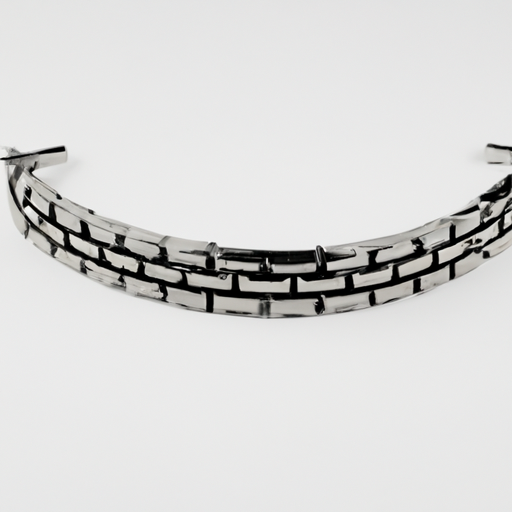
An Article to Help You Understand What a Shell Is I. IntroductionWhen we hear the term "shell," our minds might conjure images of a beautiful seashell washed up on the beach, the protective casing of a turtle, or even the command line interface on our computers. The concept of a shell is multifaceted, spanning various fields such as biology, technology, and architecture. Understanding what a shell is and its significance in these contexts can deepen our appreciation for the natural world, enhance our technological skills, and inform our architectural designs. This article will explore the different types of shells, their functions, and their importance, providing a comprehensive overview of this intriguing concept. II. Types of Shells A. Biological ShellsBiological shells are protective outer coverings found in various organisms, most notably in mollusks and reptiles. These shells serve multiple functions, including protection from predators, support for the organism's body, and even aiding in locomotion. For example, the hard shell of a turtle not only protects it from threats but also provides structural support for its body. B. Computer ShellsIn the realm of technology, a computer shell refers to the interface that allows users to interact with the operating system. There are two primary types of computer shells: command-line interfaces (CLI) and graphical user interfaces (GUI). CLIs, such as Bash and PowerShell, allow users to execute commands through text input, while GUIs, like Windows and macOS, provide a more visual approach to interaction. Understanding these shells is crucial for anyone looking to navigate and utilize technology effectively. C. Architectural ShellsArchitectural shells refer to the outer structures of buildings that provide both aesthetic appeal and functional support. These shells can be seen in various forms, from the sleek curves of modern skyscrapers to the intricate designs of traditional structures. The importance of architectural shells lies in their ability to enhance the design and engineering of buildings, contributing to their overall stability and energy efficiency. III. Biological Shells A. Composition and StructureBiological shells are composed of various materials, depending on the organism. For instance, mollusk shells are primarily made of calcium carbonate, while the shells of some insects are composed of chitin. The growth and development of these shells are fascinating processes, often involving the secretion of materials by the organism itself. As the organism grows, so does its shell, allowing it to maintain protection and support throughout its life. B. Ecological RoleBiological shells play a vital role in ecosystems. They provide habitats for various species, contribute to nutrient cycling, and serve as a food source for others. For example, the shells of marine organisms can create habitats for small fish and invertebrates, fostering biodiversity in aquatic environments. Additionally, the interaction between shell-bearing organisms and their environment can have significant ecological implications. C. Human InteractionHumans have long been fascinated by biological shells, using them in art, decoration, and even as tools. The shellfish industry is a significant economic sector, providing food and materials for various products. Moreover, shells are often used in jewelry and crafts, showcasing their beauty and cultural significance. IV. Computer Shells A. Command-Line Interfaces (CLI)Command-line interfaces (CLI) are text-based interfaces that allow users to execute commands by typing them into a console. Popular examples include Bash, used in many Unix-based systems, and PowerShell, which is prevalent in Windows environments. CLIs offer several advantages, such as speed and flexibility, allowing users to perform complex tasks efficiently. However, they can also be intimidating for beginners, as they require familiarity with command syntax and structure. B. Graphical User Interfaces (GUI)Graphical user interfaces (GUI) provide a more user-friendly approach to interacting with computers. By using visual elements like icons, buttons, and menus, GUIs make it easier for users to navigate their systems. Popular examples include Windows and macOS, which have become standard in personal computing. While GUIs are generally more accessible, they may lack the speed and efficiency of CLIs for advanced users. C. Shell ScriptingShell scripting is a powerful tool that allows users to automate tasks by writing scripts in a shell language. These scripts can perform a wide range of functions, from simple file management to complex system administration tasks. Understanding the basics of shell scripting can significantly enhance productivity and streamline workflows, making it an essential skill for anyone working in technology. V. Architectural Shells A. Definition and CharacteristicsArchitectural shells are the outer structures of buildings that provide both aesthetic and functional benefits. These shells can take various forms, from the smooth curves of modern designs to the intricate details of historical architecture. The characteristics of shell structures often include lightweight materials, efficient load distribution, and the ability to create large open spaces without the need for extensive internal support. B. Engineering PrinciplesThe engineering principles behind shell structures are fascinating. They rely on the distribution of loads across their surfaces, allowing them to maintain structural integrity while using minimal materials. Common materials used in shell construction include concrete, steel, and glass, each chosen for its strength and durability. Understanding these principles is crucial for architects and engineers as they design safe and efficient buildings. C. Environmental ImpactArchitectural shells can have a significant impact on energy efficiency and sustainability. By utilizing natural light and ventilation, shell structures can reduce energy consumption and create healthier living environments. Notable examples of sustainable shell architecture include the Eden Project in the UK and the Sydney Opera House in Australia, both of which showcase innovative design and environmental consciousness. VI. Comparative Analysis A. Similarities and Differences between Biological, Computer, and Architectural ShellsWhile biological, computer, and architectural shells serve different purposes, they share common characteristics. All types of shells provide protection and support, whether for living organisms, computer systems, or buildings. However, their materials, structures, and functions vary significantly, reflecting the unique needs of each context. B. Interdisciplinary ConnectionsThe concept of shells transcends disciplines, with ideas from one type influencing another. For example, the principles of load distribution in architectural shells can inform the design of protective biological shells. Similarly, the efficiency of command-line interfaces in computing can inspire streamlined approaches in other fields. Recognizing these interdisciplinary connections can foster innovation and creativity across various domains. VII. ConclusionIn conclusion, the concept of a shell is rich and varied, encompassing biological, technological, and architectural dimensions. Understanding shells enhances our appreciation for the natural world, informs our technological practices, and inspires innovative architectural designs. As we continue to explore the significance of shells in different contexts, we encourage readers to delve deeper into this fascinating topic, whether through further study or practical application in their own lives. VIII. ReferencesFor those interested in exploring the topic of shells further, consider the following resources:1. "The Shell: A World of Wonder" by John W. McGowan2. "The Art of Shells: A Guide to Collecting and Displaying Shells" by Susan L. Smith3. "Command Line Kung Fu: Bash Scripting Tricks" by Jason Cannon4. "Shell Structures for Architecture: Form Finding and Optimization" by A. A. M. A. A. A. A. A. A. A. A. A. A. A. A. A. A. A. A. A. A. A. A. A. A. A. A. A. A. A. A. A. A. A. A. A. A. A. A. A. A. A. A. A. A. A. A. A. A. A. A. A. A. A. A. A. A. A. A. A. A. A. A. A. A. A. A. A. A. A. A. A. A. A. A. A. A. A. A. A. A. A. A. A. A. A. A. A. A. A. A. A. A. A. A. A. A. A. A. A. A. A. A. A. A. A. A. A. A. A. A. A. A. A. A. A. A. A. A. A. A. A. A. A. A. A. A. A. A. A. A. A. A. A. A. A. A. A. A. A. A. A. A. A. A. A. A. A. A. A. A. A. A. A. A. A. A. A. A. A. A. A. A. A. A. A. A. A. A. A. A. A. A. A. A. A. A. A. A. A. A. A. A. A. A. A. A. A. A. A. A. A. A. A. A. A. A. A. A. A. A. A. A. A. A. A. A. A. A. A. A. A. A. A. A. A. A. A. A. A. A. A. A. A. A. A. A. A. A. A. A. A. A. A. A. A. A. A. A. A. A. A. A. A. A. A. A. A. A. A. A. A. A. A. A. A. A. A. A. A. A. A. A. A. A. A. A. A. A. A. A. A. A. A. A. A. A. A. A. A. A. A. A. A. A. A. A. A. A. A. A. A. A. A. A. A. A. A. A. A. A. A. A. A. A. A. A. A. A. A. A. A. A. A. A. A. A. A. A. A. A. A. A. A. A. A. A. A. A. A. A. A. A. A. A. A. A. A. A. A. A. A. A. A. A. A. A. A. A. A. A. A. A. A. A. A. A. A. A. A. A. A. A. A. A. A. A. A. A. A. A. A. A. A. A. A. A. A. A. A. A. A. A. A. A. A. A. A. A. A. A. A. A. A. A. A. A. A. A. A. A. A. A. A. A. A. A. A. A. A. A. A. A. A. A. A. A. A. A. A. A. A. A. A. A. A. A. A. A. A. A. A. A. A. A. A. A. A. A. A. A. A. A. A. A. A. A. A. A. A. A. A. A. A. A. A. A. A. A. A. A. A. A. A. A. A. A. A. A. A. A. A. A. A. A. A. A. A. A. A. A. A. A. A. A. A. A. A. A. A. A. A. A. A. A. A. A. A. A. A. A. A. A. A. A. A. A. A. A. A. A. A. A. A. A. A. A. A. A. A. A. A. A. A. A. A. A. A. A. A. A. A. A. A. A. A. A. A. A. A. A. A. A. A. A. A. A. A. A. A. A. A. A. A. A. A. A. A. A. A. A. A. A. A. A. A. A. A. A. A. A. A. A. A. A. A. A. A. A. A. A. A. A. A. A. A. A. A. A. A. A. A. A. A. A. A. A. A. A. A. A. A. A

What Are the Product Features of Accessories? I. IntroductionAccessories are often the unsung heroes of fashion and lifestyle, playing a crucial role in enhancing personal style and functionality. Defined as supplementary items that complement an outfit or serve a specific purpose, accessories can transform a simple look into something extraordinary. From jewelry that adds a touch of elegance to tech gadgets that enhance our daily lives, accessories are essential in expressing individuality and practicality. This article aims to explore the various types of accessories, their key features, and the latest trends shaping the accessory landscape. II. Types of AccessoriesAccessories can be broadly categorized into three main types: fashion accessories, functional accessories, and home accessories. A. Fashion AccessoriesFashion accessories are primarily designed to enhance personal style. They include:1. **Jewelry**: Rings, necklaces, bracelets, and earrings that add sparkle and personality to any outfit.2. **Bags and Purses**: From clutches to tote bags, these items are both functional and fashionable.3. **Belts**: Not only do they hold up pants, but they also serve as statement pieces.4. **Scarves and Shawls**: Versatile items that can be worn in various ways to add warmth and style.5. **Hats and Headwear**: From sun hats to beanies, headwear can complete an outfit while providing protection from the elements. B. Functional AccessoriesFunctional accessories serve practical purposes while often being stylish. They include:1. **Watches**: Timepieces that combine functionality with fashion.2. **Sunglasses**: Essential for eye protection and a stylish addition to any outfit.3. **Tech Accessories**: Items like phone cases and chargers that protect and enhance our devices.4. **Travel Accessories**: Items such as luggage tags and travel pillows that make traveling more convenient. C. Home AccessoriesHome accessories enhance the aesthetic and functionality of living spaces. They include:1. **Decorative Items**: Vases, wall art, and sculptures that add character to a home.2. **Functional Items**: Organizers and storage solutions that help maintain order and efficiency. III. Key Features of Fashion AccessoriesFashion accessories are characterized by several key features that contribute to their appeal. A. Material Quality1. **Types of Materials Used**: Fashion accessories can be made from a variety of materials, including metals (gold, silver, stainless steel), fabrics (cotton, silk, leather), and synthetic materials. The choice of material often influences the overall look and feel of the accessory.2. **Durability and Maintenance**: High-quality materials ensure longevity, while proper maintenance (cleaning, storage) can preserve the accessory's appearance. B. Design and Aesthetics1. **Trends in Design**: Fashion accessories often reflect current trends, from minimalist designs to bold statement pieces.2. **Color and Pattern Variations**: Accessories come in a myriad of colors and patterns, allowing for personal expression and coordination with various outfits.3. **Customization Options**: Many brands offer customization, enabling consumers to create unique pieces that reflect their personal style. C. Versatility1. **Multi-functional Uses**: Many accessories can serve multiple purposes, such as a scarf that can be worn in various styles or a bag that can transition from day to night.2. **Compatibility with Different Outfits**: Accessories can easily be mixed and matched with different clothing styles, making them a versatile addition to any wardrobe. D. Brand Influence1. **Brand Reputation and Recognition**: Well-known brands often carry a certain prestige, influencing consumer choices.2. **Impact of Designer Collaborations**: Collaborations between designers and brands can lead to unique and highly sought-after accessories. IV. Key Features of Functional AccessoriesFunctional accessories prioritize practicality while often incorporating stylish elements. A. Practicality1. **Everyday Use and Convenience**: Functional accessories are designed for daily use, making life easier and more organized.2. **Ergonomic Design**: Many functional accessories are designed with user comfort in mind, ensuring ease of use. B. Technology Integration1. **Smart Accessories**: The rise of smartwatches and fitness trackers has integrated technology into everyday accessories, providing users with valuable data and connectivity.2. **Compatibility with Other Devices**: Many tech accessories are designed to work seamlessly with other devices, enhancing their functionality. C. Safety and Protection1. **UV Protection in Sunglasses**: Quality sunglasses provide essential protection against harmful UV rays, combining safety with style.2. **Durability in Tech Accessories**: Tech accessories are often designed to withstand wear and tear, ensuring that devices remain protected. V. Key Features of Home AccessoriesHome accessories enhance both the aesthetic and functional aspects of living spaces. A. Aesthetic Appeal1. **Enhancing Home Decor**: Decorative accessories can significantly elevate the look of a room, adding color, texture, and personality.2. **Seasonal and Thematic Variations**: Many home accessories are designed to reflect seasonal changes or specific themes, allowing for easy updates to home decor. B. Functionality1. **Space Optimization**: Functional home accessories, such as organizers and storage solutions, help maximize space and maintain order.2. **Organizational Features**: Many home accessories are designed with specific organizational features, making it easier to keep spaces tidy. C. Eco-Friendliness1. **Sustainable Materials**: An increasing number of home accessories are made from sustainable materials, appealing to environmentally conscious consumers.2. **Impact on Home Environment**: Eco-friendly accessories can contribute to a healthier home environment, promoting well-being. VI. Trends in AccessoriesThe accessory market is constantly evolving, influenced by various trends. A. Sustainable and Ethical AccessoriesAs consumers become more environmentally conscious, there is a growing demand for sustainable and ethically produced accessories. Brands are responding by using eco-friendly materials and transparent production processes. B. Minimalism vs. MaximalismThe debate between minimalism and maximalism continues to shape accessory design. Minimalist accessories focus on simplicity and functionality, while maximalist designs embrace bold colors and intricate details. C. Cultural Influences on Accessory DesignCultural influences play a significant role in accessory design, with many brands drawing inspiration from global traditions and styles. This trend promotes diversity and inclusivity in fashion. D. The Rise of Personalized AccessoriesPersonalization is becoming increasingly popular, with consumers seeking unique pieces that reflect their individuality. Brands are offering customizable options, allowing customers to create one-of-a-kind accessories. VII. ConclusionIn summary, accessories are more than just supplementary items; they are essential components of personal expression and functionality. From fashion accessories that enhance style to functional items that improve daily life, the features of accessories are diverse and impactful. As trends continue to evolve, the future of accessories promises innovation and creativity, ensuring that they remain a vital part of our wardrobes and homes. VIII. ReferencesA. Suggested Reading B. Sources for Further Research---This blog post provides a comprehensive overview of the product features of accessories, exploring their types, key characteristics, and current trends. Each section is designed to inform and engage readers, highlighting the importance of accessories in both fashion and everyday life.

What are the Product Features of Fasteners? I. IntroductionFasteners are essential components in a wide range of applications, serving as the building blocks that hold various materials together. From the construction of skyscrapers to the assembly of electronic devices, fasteners play a critical role in ensuring structural integrity and functionality. This article aims to explore the diverse product features of fasteners, including their types, material composition, design features, performance characteristics, installation methods, industry standards, and applications across various sectors. II. Types of FastenersFasteners can be broadly categorized into three main types: mechanical fasteners, non-mechanical fasteners, and specialty fasteners. A. Mechanical FastenersMechanical fasteners are the most common type and include:1. **Bolts**: These are cylindrical rods with external threads, designed to be used with nuts to secure two or more components together.2. **Nuts**: Typically hexagonal, nuts are internally threaded and are used in conjunction with bolts to create a secure fastening.3. **Screws**: Unlike bolts, screws are designed to be driven into materials and can create their own internal threads.4. **Washers**: These flat discs are used to distribute the load of a fastener and prevent damage to the surface being fastened. B. Non-mechanical FastenersNon-mechanical fasteners do not rely on traditional threading and include:1. **Adhesives**: These are chemical compounds that bond materials together, often used in applications where traditional fasteners may not be suitable.2. **Clips**: These are simple devices that hold components together without the need for threading.3. **Rivets**: These are permanent fasteners that are used to join materials by deforming the rivet to create a secure connection. C. Specialty FastenersSpecialty fasteners are designed for specific applications and include:1. **Anchors**: Used in construction, anchors provide a secure hold in materials like concrete or drywall.2. **Pins**: These are cylindrical fasteners used to secure the position of two or more components.3. **Studs**: These are threaded rods that are used to connect two components, often found in automotive and machinery applications. III. Material CompositionThe material composition of fasteners significantly impacts their performance and suitability for various applications. A. Metals1. **Steel**: Known for its strength and durability, steel is commonly used in construction and automotive applications.2. **Stainless Steel**: This corrosion-resistant alloy is ideal for applications exposed to moisture or chemicals.3. **Aluminum**: Lightweight and resistant to corrosion, aluminum fasteners are often used in aerospace and automotive industries. B. Plastics1. **Nylon**: This synthetic polymer is known for its strength and resistance to chemicals, making it suitable for various applications.2. **Polypropylene**: Lightweight and resistant to moisture, polypropylene is often used in consumer products. C. CompositesComposite materials combine different substances to create fasteners that offer unique properties, such as enhanced strength or reduced weight. D. Considerations for Material SelectionWhen selecting materials for fasteners, factors such as environmental conditions, load requirements, and compatibility with other materials must be considered to ensure optimal performance. IV. Design FeaturesThe design of fasteners is crucial for their functionality and effectiveness. A. Thread Design1. **Coarse vs. Fine Threads**: Coarse threads provide better grip and are easier to install, while fine threads offer greater holding power and are used in precision applications.2. **Thread Pitch and Its Significance**: The distance between threads, known as pitch, affects the strength and load capacity of the fastener. B. Head Types1. **Hex, Phillips, Torx, etc.**: Different head types impact the torque that can be applied during installation and the tools required.2. **Impact on Torque and Installation**: The design of the head influences how easily a fastener can be installed or removed. C. Length and Diameter1. **Importance of Size in Application**: The length and diameter of a fastener must be appropriate for the materials being joined to ensure a secure connection.2. **Tolerance and Fit**: Proper tolerances are essential for ensuring that fasteners fit correctly and function as intended. V. Performance CharacteristicsFasteners must meet specific performance characteristics to be effective in their applications. A. Load Capacity1. **Tensile Strength**: This measures the maximum load a fastener can withstand when being pulled apart.2. **Shear Strength**: This measures the maximum load a fastener can withstand when being pushed or pulled sideways. B. Corrosion Resistance1. **Coatings and Finishes**: Various coatings, such as zinc plating or powder coating, can enhance corrosion resistance.2. **Material Selection for Specific Environments**: Choosing the right material is crucial for applications in harsh environments, such as marine or chemical settings. C. Temperature Resistance1. **High-temperature Applications**: Fasteners used in high-temperature environments must be made from materials that can withstand heat without losing strength.2. **Low-temperature Applications**: Similarly, fasteners for low-temperature applications must maintain their integrity in cold conditions. VI. Installation and MaintenanceProper installation and maintenance are vital for the longevity and effectiveness of fasteners. A. Installation Methods1. **Manual vs. Automated Installation**: Depending on the application, fasteners can be installed manually or with automated machinery for efficiency.2. **Tools Required for Installation**: Various tools, such as wrenches, screwdrivers, and power tools, are necessary for the installation of different types of fasteners. B. Maintenance Considerations1. **Inspection and Replacement**: Regular inspection of fasteners is essential to identify wear and tear, ensuring timely replacement to maintain safety and functionality.2. **Lubrication and Care**: Proper lubrication can reduce friction and wear, extending the life of fasteners. VII. Industry Standards and CertificationsAdhering to industry standards and certifications is crucial for ensuring the quality and reliability of fasteners. A. Overview of Relevant StandardsStandards such as ISO (International Organization for Standardization) and ASTM (American Society for Testing and Materials) provide guidelines for the manufacturing and testing of fasteners. B. Importance of Certifications in Quality AssuranceCertifications ensure that fasteners meet specific quality and safety standards, providing assurance to manufacturers and consumers alike. C. Impact on Product SelectionUnderstanding industry standards can help in selecting the right fasteners for specific applications, ensuring compliance and reliability. VIII. Applications of FastenersFasteners are used across various industries, each with unique requirements and challenges. A. ConstructionIn construction, fasteners are used to secure structural components, ensuring the stability and safety of buildings and infrastructure. B. AutomotiveFasteners in the automotive industry are critical for assembling vehicles, ensuring that components are securely attached for safety and performance. C. AerospaceIn aerospace applications, fasteners must meet stringent safety and performance standards due to the high-stakes nature of the industry. D. ElectronicsFasteners in electronics are often small and lightweight, designed to secure delicate components without adding unnecessary weight. E. Consumer ProductsFrom furniture assembly to household appliances, fasteners are integral to the manufacturing of consumer products, ensuring durability and functionality. IX. ConclusionFasteners are indispensable components in a wide range of applications, and understanding their features is crucial for selecting the right type for specific needs. As technology advances, the future of fasteners will likely see innovations in materials, design, and performance characteristics, further enhancing their functionality and reliability. When choosing fasteners, it is essential to consider factors such as material composition, design features, and industry standards to ensure optimal performance and safety in any application. X. ReferencesA comprehensive list of sources for further reading, including industry publications and standards documents, can provide additional insights into the world of fasteners and their applications.

How Does Hardware Work? I. IntroductionIn the realm of computing, the term "hardware" refers to the physical components that make up a computer system. Understanding hardware is crucial for anyone looking to delve deeper into the world of technology, whether for personal interest, academic pursuits, or professional development. This article will explore the various components of computer hardware, their functions, and how they work together to create a fully operational system. We will also touch on emerging technologies that are shaping the future of hardware. II. The Basics of Computer Hardware A. Definition and Components of Computer HardwareComputer hardware encompasses all the tangible parts of a computer system. These components can be broadly categorized into several key areas:1. **Central Processing Unit (CPU)**: Often referred to as the brain of the computer, the CPU executes instructions and processes data.2. **Memory (RAM and ROM)**: RAM (Random Access Memory) is used for temporary data storage, while ROM (Read-Only Memory) holds permanent data and firmware.3. **Storage Devices (HDD, SSD)**: Hard Disk Drives (HDD) and Solid State Drives (SSD) are used for long-term data storage, with SSDs offering faster access speeds.4. **Motherboard**: This is the main circuit board that connects all hardware components, allowing them to communicate with each other.5. **Power Supply Unit (PSU)**: The PSU converts electrical power from an outlet into usable power for the computer's components.6. **Input and Output Devices**: These include peripherals like keyboards, mice, monitors, and printers that allow users to interact with the computer. B. The Role of Hardware in a Computer SystemHardware serves as the foundation upon which software operates. Without hardware, software would have no platform to run on. Each component plays a specific role, and their interaction is essential for the overall functionality of the computer. III. Central Processing Unit (CPU) A. Definition and Function of the CPUThe CPU is a critical component of any computer system, responsible for executing instructions from programs. It performs calculations, processes data, and manages tasks. B. Architecture of the CPUThe architecture of the CPU consists of several key elements:1. **ALU (Arithmetic Logic Unit)**: This part of the CPU performs arithmetic and logical operations.2. **Control Unit**: The control unit directs the operation of the processor and coordinates the activities of all other components.3. **Registers**: These are small storage locations within the CPU that hold data temporarily during processing. C. How the CPU Processes InstructionsThe CPU processes instructions through a cycle known as the Fetch-Decode-Execute cycle. In this cycle, the CPU fetches an instruction from memory, decodes it to understand what action is required, and then executes the instruction. The clock speed of the CPU, measured in gigahertz (GHz), determines how many cycles it can perform per second, directly impacting performance. IV. Memory and Storage A. Types of Memory1. **Random Access Memory (RAM)**: This is volatile memory used for temporary storage while a computer is running. It allows for quick read and write access, making it essential for multitasking and running applications.2. **Read-Only Memory (ROM)**: Unlike RAM, ROM is non-volatile and retains its data even when the computer is turned off. It typically contains firmware and system boot instructions. B. Storage Devices1. **Hard Disk Drives (HDD)**: HDDs use spinning disks to read and write data magnetically. They offer large storage capacities at a lower cost but are slower than SSDs.2. **Solid State Drives (SSD)**: SSDs use flash memory to store data, providing faster access speeds and improved durability compared to HDDs. They are becoming increasingly popular for both personal and enterprise use. C. The Importance of Memory and Storage in ComputingMemory and storage are vital for a computer's performance. Sufficient RAM allows for smooth operation of applications, while adequate storage ensures that users can save and access their data efficiently. V. Motherboard A. Definition and Purpose of the MotherboardThe motherboard is the central hub of a computer, connecting all hardware components and allowing them to communicate. It houses the CPU, memory, and other essential components. B. Key Components of the Motherboard1. **Chipset**: The chipset manages data transfers between the CPU, memory, and peripherals.2. **Expansion Slots**: These slots allow users to add additional components, such as graphics cards or sound cards, to enhance the computer's capabilities.3. **Connectors and Ports**: The motherboard includes various connectors and ports for connecting input/output devices, storage, and power. C. The Motherboard's Role in Connecting Hardware ComponentsThe motherboard's design and layout are crucial for ensuring that all components work together seamlessly. It provides the necessary pathways for data and power, making it a fundamental part of any computer system. VI. Power Supply Unit (PSU) A. Definition and Function of the PSUThe Power Supply Unit (PSU) converts electrical power from an outlet into the appropriate voltage and current needed by the computer's components. It is essential for providing stable and reliable power. B. Types of Power Supplies1. **Modular vs. Non-Modular**: Modular power supplies allow users to connect only the cables they need, reducing clutter and improving airflow. Non-modular power supplies come with all cables permanently attached.2. **Wattage Considerations**: The wattage rating of a PSU indicates how much power it can provide. It's important to choose a PSU with sufficient wattage to support all components. C. Importance of a Reliable Power Supply for Hardware PerformanceA reliable PSU is crucial for maintaining system stability and performance. Insufficient or unstable power can lead to hardware malfunctions or failures. VII. Input and Output Devices A. Definition and Examples of Input DevicesInput devices allow users to interact with the computer. Common examples include:1. **Keyboard**: Used for typing and inputting commands.2. **Mouse**: A pointing device that allows users to navigate the graphical user interface.3. **Scanners**: Devices that convert physical documents into digital format. B. Definition and Examples of Output DevicesOutput devices present information to the user. Examples include:1. **Monitors**: Display visual output from the computer.2. **Printers**: Produce physical copies of digital documents.3. **Speakers**: Output audio signals from the computer. C. The Interaction Between Input and Output Devices and the Computer SystemInput and output devices work together to facilitate user interaction with the computer. For example, a user types a command on the keyboard (input), and the computer processes it and displays the result on the monitor (output). VIII. The Role of Hardware in Software Functionality A. How Hardware and Software InteractHardware and software are interdependent. Software applications rely on hardware to function, while hardware requires software to operate effectively. This interaction is fundamental to computing. B. The Importance of Hardware Compatibility with SoftwareFor software to run smoothly, it must be compatible with the hardware it operates on. This includes considerations such as processor architecture, memory requirements, and peripheral support. C. Examples of Hardware-Software IntegrationExamples of hardware-software integration include gaming consoles that combine specialized hardware with software to deliver immersive gaming experiences, and smartphones that integrate various sensors and applications for enhanced functionality. IX. Emerging Hardware Technologies A. Overview of Current Trends in Hardware DevelopmentThe field of hardware is constantly evolving, with several exciting trends shaping the future:1. **Quantum Computing**: This emerging technology leverages the principles of quantum mechanics to perform complex calculations at unprecedented speeds.2. **AI Hardware Accelerators**: Specialized hardware designed to optimize artificial intelligence workloads is becoming increasingly important as AI applications grow.3. **IoT Devices**: The Internet of Things (IoT) is driving the development of smart devices that connect to the internet, enabling new functionalities and data collection. B. The Future of Hardware in ComputingAs technology advances, we can expect to see continued innovation in hardware design and functionality. This will lead to more powerful, efficient, and versatile computing systems. X. ConclusionUnderstanding hardware is essential for anyone interested in computing. The interplay between hardware and software is fundamental to the performance and capabilities of computer systems. As technology continues to evolve, staying informed about hardware developments will be crucial for leveraging the full potential of computing. XI. ReferencesFor those interested in further exploring the world of hardware, consider the following resources:- "Computer Hardware: The Definitive Guide" by John Doe- "Understanding Computers: Today and Tomorrow" by Deborah Morley- Online courses on platforms like Coursera and edX that cover computer hardware fundamentals.By delving into these resources, readers can deepen their understanding of how hardware works and its significance in the ever-evolving landscape of technology.







